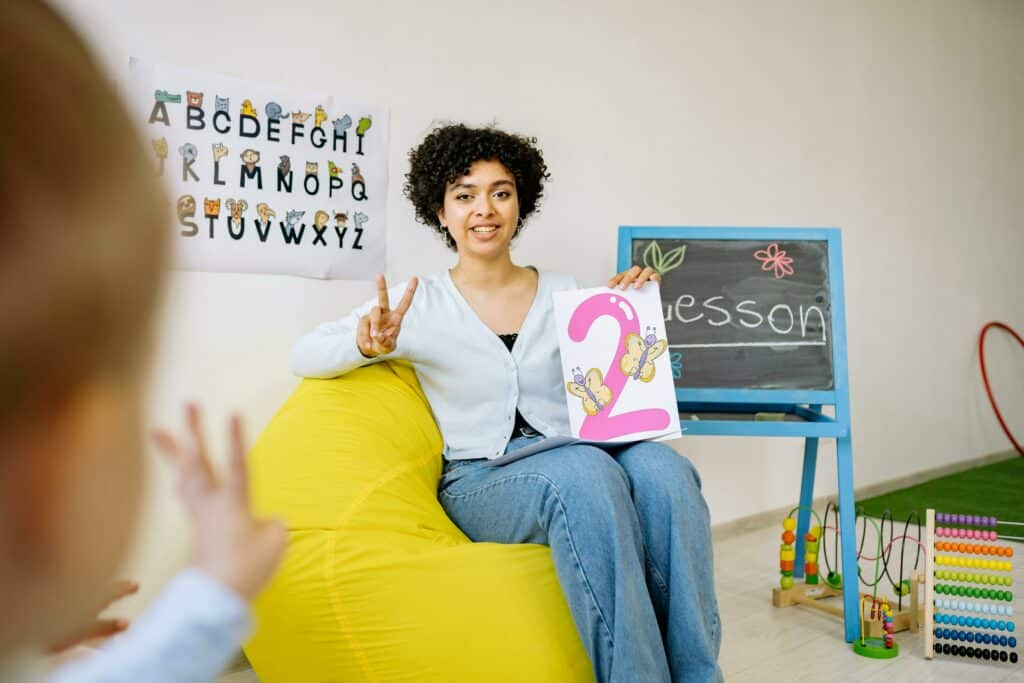The push for inclusivity in the classroom has fostered a range of strategies for creating learning environments that meet the needs of students with a wide range of mental, physical, and developmental challenges. Particularly in proactive states like New York, supporting children with autism spectrum disorder (ASD) has become an everyday part of being a professional educator. 1 in 36 children in this country are living with autism, and with a few basic accommodations, these students can be integrated into any classroom comfortably and empathetically.
Of course, ASD can vary in severity, and each child will have their own unique experience with the disorder. Various sensory, socialization, and learning complications may be present, and with so many moving parts in today’s classroom, it’s important to pay special attention to sources of discomfort or frustration. Children with autism can easily become overstimulated or distracted, resulting in stress and anxiety that impact their ability to meaningfully participate.
Professional development courses like Needs of Children with Autism deliver valuable insights into current autism classroom setup strategies that can help teachers maintain the balance these children need to be successful. In the meantime, the following tips will allow you to bring out the best in all your students—whether you’re in New York State or elsewhere!
Start with the Space
Before students even enter the classroom, every teacher needs to spend some time creating an environment that avoids potential traffic jams and supports good classroom habits. While there are specific concepts that apply to creating a space that’s more friendly for students with autism, classroom setup principles are basically the same.
Consider Transitions
Transitions are always potential pitfalls for classroom management, and students with ASD simply have additional issues to consider. Children with autism tend to be very routine-oriented, and breaks in predictable expectations can be a source of stress. Creating a classroom layout that allows for fluid transitions from one activity to another—or at least giving these students the simplest options—may ease resistance and help them navigate these moments.
Manage Distance
Also, for children with sensory issues, having another student sitting next to them may not be the best option. Creating a workstation or desk area with enough separation from other students to limit distraction may be helpful. Also, keep in mind that any one-to-one paraprofessionals or aides who may be accompanying the student will need some space as well.
Limit Distractions
Common sensory challenges students with ASD face in a classroom can include aural, visual, and tactile stimuli. If possible, don’t seat them near bright projector equipment, PA systems, speakers, or climate control equipment. Also, depending on how much space you’re working with, the use of barriers or partitions may be needed to limit visual or auditory distractions.
Finally, the following tips are useful in any classroom and can be particularly helpful when creating an inclusive autism classroom setup:
- Use colored tape to reinforce boundaries
- Remove any furniture that isn’t useful or purposeful
- Use furniture to block areas of the classroom that could be distracting when not in use
- Limit clutter
Establish Your Teaching Structure
Routines are critical for classroom management, and they are particularly helpful for students with ASD who are very routine-oriented. In fact, you’ll probably discover that the extra structure you implement in your classroom management plan to support your students with autism is beneficial for everyone!
Posting an easily visualized schedule will help all students anticipate transitions between activities and understand where they’re headed next. Awareness of the plan and expectations reduces the need for constant reminders and supports student autonomy while also filling a valuable need for your students with ASD.
How you approach lesson planning can also have a significant effect on how any student performs. Learning strategies that are governed by similar processes and structures can save you time, streamline activities, and help guide students through new activities.
Finally, the use of visual cues can enable a child with autism to quickly understand what needs to be done and redirect them to important information if there’s any confusion. As long as they’re established in advance and used consistently, these techniques minimize interruptions and outbursts.
Reduce Sensory Stimulation
Classrooms can be dynamic and exciting environments, and any child can become overstimulated and need a little break during these activities. Students with ASD are particularly susceptible to overstimulation. Teachers need to carefully consider what roles will help them be most successful and create appropriate avenues for taking a break.
Creating a friendly autism classroom setup is a great first step, and as activities progress you can visually check in for signs that a student is becoming overwhelmed. If you see a student exhibiting any of the following, give them permission to take a break and find some space:
- Covering their ears
- Loss of focus
- Difficulty regulating behavior
- Anxiety or rapid breathing
- Frustration or irritability
Of course, special activities may be particularly difficult for everyone, so planning ahead for students with ASD just requires a little extra thought. When engaging with new experiences—particularly interactive ones like touching objects or interacting with others—every student should be empowered to approach them within their own comfort level.
Outline expectations in advance, describe what will happen in detail, answer any questions that may come up to anticipate needs, and make sure you’re focused on each child individually as they engage to help them manage their own experience.
Think About Communication Needs
Children with autism often have unique needs and preferences when it comes to communication. Depending on the student’s unique circumstances, it may be helpful to place symbols, objects, or photos around the classroom.
Also, people with ASD can exhibit symptoms that range from mild or extreme. They may have severe verbal limitations, for instance, and require special assistance from aides during class. Students with ASD are typically on IEPs, and they’re the foundation of inclusive classrooms in states like New York. Great student communication begins with maintaining regular contact with administration and developing strong relationships with parents.
Finally, figure out what method works best for your students with autism and bring their peers into the conversation. Communication in the classroom is not simply between the student and the teacher; creating a truly inclusive environment is dependent on a greater understanding of communication needs among all students.
Establish an Area for Calming
As hard as you may work at creating the perfect autism classroom setup, overstimulation or communication breakdowns are bound to happen. When it does, this can quickly lead to frustration and behavioral challenges.
Creating an area designed to simply let students calm down has immense value for everyone in the classroom. This could be as simple as a small space in the corner with a comfortable piece of furniture and some headphones, or a desk with dividers and some books to read. Include a range of activities to support calming, and never use it as a form of punishment!
Improve Your Autism Classroom Setup
Plenty of children with autism integrate into classrooms across the country without a problem, largely due to the specialized teaching strategies implemented by amazing teaching professionals. There is no one solution to supporting any child in the classroom, and Premiere is dedicated to helping all teachers create an ideal autism classroom setup with high-quality professional development content.
Needs of Children with Autism and New York - DASA Dignity for All Students Training created by Amy Adkins-Dwivedi MS, APRN, and Jennifer McDaniel M.Ed., QIDP are the perfect place to start. Enhancing your understanding of the etiology and prevalence of autism, its characteristics, current research, evidence-based instructional methods, behavior management techniques, and tips for effective collaboration helps create the framework for an effective autism classroom setup.
All of Premiere’s content is created by leading industry experts and makes it easy for educators anywhere in the country to meet their certification requirements and give their students the best start possible.





